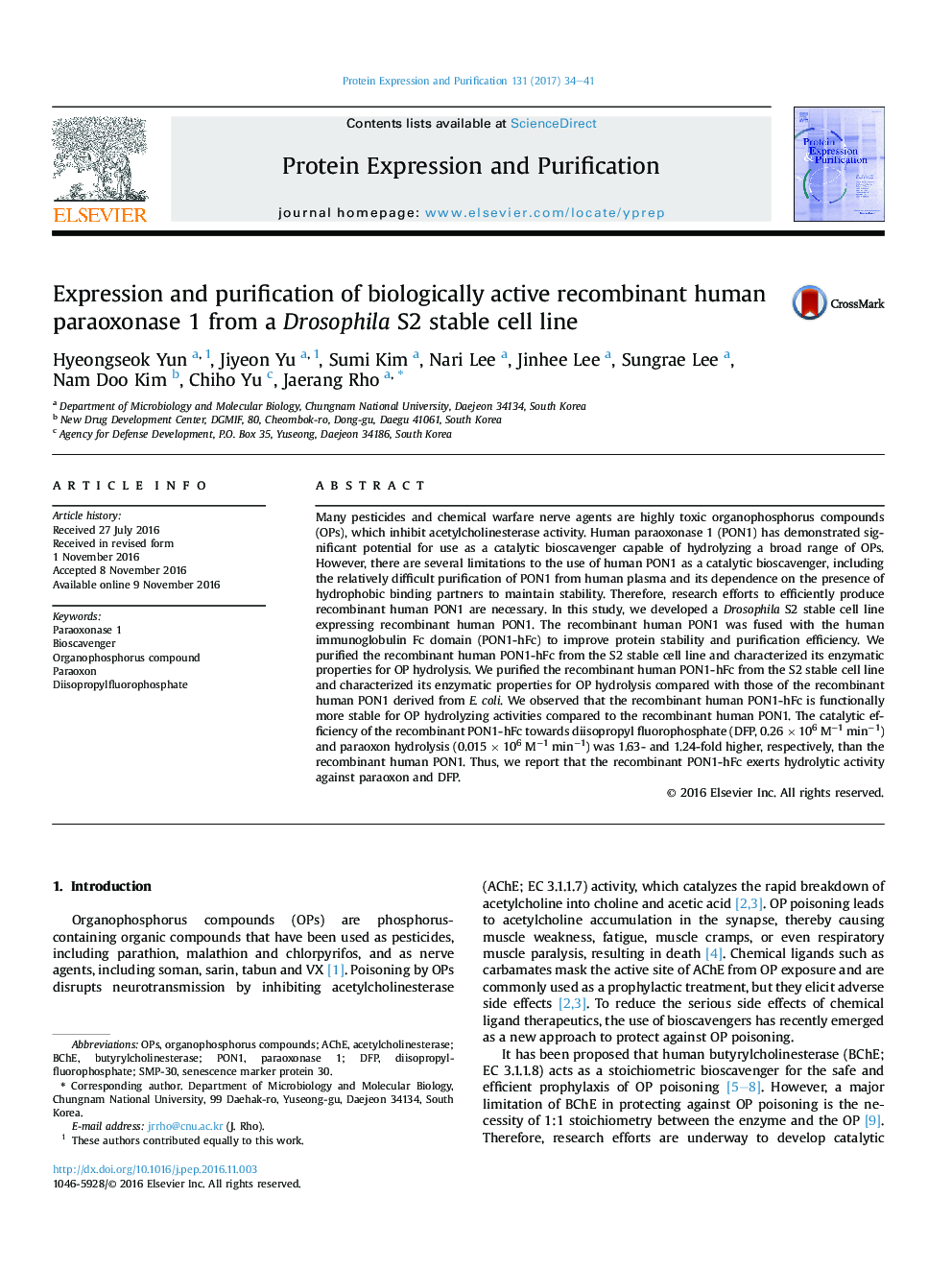| Article ID | Journal | Published Year | Pages | File Type |
|---|---|---|---|---|
| 5516111 | Protein Expression and Purification | 2017 | 8 Pages |
â¢The recombinant human paraoxonase 1 was fused with the human immunoglobulin Fc domain.â¢A Drosophila S2 stable secretory cell line expressing recombinant human paraoxonase 1 was developed.â¢Recombinant human paraoxonase 1 was purified from this Drosophila S2 stable cell line.â¢The Kcat/Km values of recombinant human paraoxonase 1 for the hydrolysis of organophosphorus compounds were measured.
Many pesticides and chemical warfare nerve agents are highly toxic organophosphorus compounds (OPs), which inhibit acetylcholinesterase activity. Human paraoxonase 1 (PON1) has demonstrated significant potential for use as a catalytic bioscavenger capable of hydrolyzing a broad range of OPs. However, there are several limitations to the use of human PON1 as a catalytic bioscavenger, including the relatively difficult purification of PON1 from human plasma and its dependence on the presence of hydrophobic binding partners to maintain stability. Therefore, research efforts to efficiently produce recombinant human PON1 are necessary. In this study, we developed a Drosophila S2 stable cell line expressing recombinant human PON1. The recombinant human PON1 was fused with the human immunoglobulin Fc domain (PON1-hFc) to improve protein stability and purification efficiency. We purified the recombinant human PON1-hFc from the S2 stable cell line and characterized its enzymatic properties for OP hydrolysis. We purified the recombinant human PON1-hFc from the S2 stable cell line and characterized its enzymatic properties for OP hydrolysis compared with those of the recombinant human PON1 derived from E. coli. We observed that the recombinant human PON1-hFc is functionally more stable for OP hydrolyzing activities compared to the recombinant human PON1. The catalytic efficiency of the recombinant PON1-hFc towards diisopropyl fluorophosphate (DFP, 0.26 Ã 106 Mâ1 minâ1) and paraoxon hydrolysis (0.015 Ã 106 Mâ1 minâ1) was 1.63- and 1.24-fold higher, respectively, than the recombinant human PON1. Thus, we report that the recombinant PON1-hFc exerts hydrolytic activity against paraoxon and DFP.
